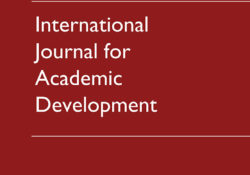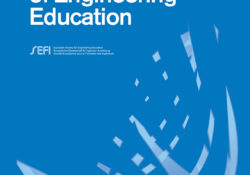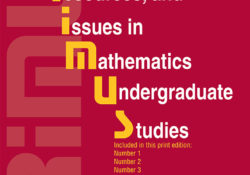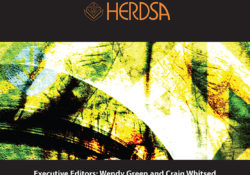
tandfonline.com har udgivet en rapport under søgningen “Teacher Education Mathematics”: ABSTRACT ABSTRACT One consequence of novice researchers studying methodology textbooks is confusion: philosophical terminology is complicated and sometimes poorly defined. Another consequence is that inexperienced researchers divide themselves into epistemological cliques, which can inhibit inter-disciplinary discussions. This is a particular problem in subjects, such as Information Science, that bridge disciplines. This article attempts to address these issues by seeking ground common to researchers, regardless of their philosophical standpoint. It identifies several ‘tools of the mind’ which are expanded on and discussed. By becoming familiar with these tools, inexperienced researchers can gain practical insights that create context for philosophical terms they later encounter. ‘Tools of the mind’ discussed are captured in the following questions: What should I research? How do I… Continue Reading →
Like this:
Like Loading...
tandfonline.com har udgivet en rapport under søgningen “Teacher Education Mathematics”: Abstract Abstract The two parts in this special issue address interdisciplinary conversations involving mathematics courses in the first two years of undergraduate work. The special issue was inspired by work funded by the National Science Foundation under a grant titled “SUMMIT-P.” The special issue includes papers written about projects both from SUMMIT-P and from outside of SUMMIT-P. Part I focuses on frameworks and models of interdisciplinary collaboration. Link til kilde
Like this:
Like Loading...
tandfonline.com har udgivet en rapport under søgningen “Teacher Education Mathematics”: ABSTRACT ABSTRACT Ample research has identified several features of a learning experience likely to enhance student learning, including collaboration, open-ended exploration, and problem-based learning in real-life scenarios. Missing is a model of how instructors might combine these elements into a single project that works flexibly across disciplines and institutions. This article fills this gap by offering such a model and reporting on its effectiveness in fostering student engagement. It describes a project that instructors at four colleges and universities in Flint, Michigan (USA) piloted during the height of the Flint water crisis. The project asked students to apply class content to the real-world problem unfolding around them, and offered students an opportunity to collaborate with peers. We collected qualitative and quantitative… Continue Reading →
Like this:
Like Loading...
tandfonline.com har udgivet en rapport under søgningen “Teacher Education Mathematics”: ABSTRACT ABSTRACT Experiential learning (EL) has great potential to prepare students to work on interdisciplinary and global challenges across traditional boundaries, as well as support them in the development of reflective skills. In this study, we explore reflection as a central element for EL in the university wide interdisciplinary course Experts in Teamwork (EiT). Based upon 17 years of experience with the development of EiT, perspectives from the literature, and critically analyzing current practices, we describe two key findings from this ongoing exploration: the need to develop a framework for such a course and the need for training of teaching staff. Link til kilde
Like this:
Like Loading...
tandfonline.com har udgivet en rapport under søgningen “Teacher Education Mathematics”: ABSTRACT ABSTRACT Can you ask students from three different bachelor programmes to help solve planning and routeing problems for hospitals? In the presented case an interdisciplinary approach was shown to be successful after some redesign. Students from Applied Mathematics, Civil Engineering and Industrial & Engineering Management jointly designed solutions for ‘traffic’ to and through the hospital using stochastic modelling. Importantly this project was scaffolded through coursework, supervision and problem-design. The particular scaffolding strategy employed by the teaching team offers other teacher teams ideas for making interdisciplinary project-based learning a more effective learning opportunity. At the same time we need to ensure that students feel at home in their own programme and will be empowered to work with other specialists. Link… Continue Reading →
Like this:
Like Loading...
eric.ed.gov har udgivet: Research into Australian students’ science, technology, engineering, and maths (STEM) engagement has highlighted that there are comparably fewer women enrolling in STEM programs and working in STEM industries. In Australia, males make up 84% of the total population with STEM qualifications, for example, a report in 2015 found only 13% of all engineers in Australia were women. Science, technology, engineering, art, and mathematics (STEAM), an approach to STEM education that encourages interdisciplinarity, creativity, innovation, and entrepreneurship, is a strategy that has the potential to increase girls’ engagement with STEM. This research investigated the impact of the STEAMpunk Girls Program, funded by the Australian Government, on high school girls’ learning and their teachers’ teaching experiences. The program uses project-learning and design thinking strategies to enable the girls to… Continue Reading →
Like this:
Like Loading...
tandfonline.com har udgivet en rapport under søgningen “Teacher Education Mathematics”: Abstract Abstract The Mathematics Practicum has been offered at St. Olaf College for over 30 years. The Practicum is a 4-week, January Interim course where three teams of five students work on consulting problems solicited from area businesses, government agencies, and non-profit organizations. These problems have significant mathematical, statistical, and computational components. The projects end with a professional-quality student presentation at the client’s home office. This project-based, interdisciplinary, experience encourages problem solving, collaboration, inquiry, and communication skills. We discuss the logistics of the course, key factors that make this a positive experience for both the students and the sponsoring organizations, continuing challenges, and benefits to the students. Link til kilde
Like this:
Like Loading...
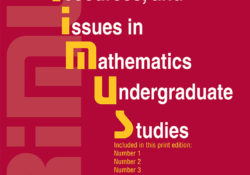
tandfonline.com har udgivet en rapport under søgningen “Teacher Education Mathematics”: Abstract Abstract James Madison University faculty team-teach an interdisciplinary mathematical modeling course for mathematics and biology students. We have used two different project-based approaches to emphasize the mathematical concepts taught in class, while also exposing students to new areas of mathematics not formally covered in class. The first method allows students to select projects based on their individual interests, which provided the class with an exposure to the breadth of applications of mathematical modeling to biology. The second method allows students to select projects that are focused around one common biological theme, which encouraged a remarkable cohesion among the whole class. These strategies could be extended to various applications-based mathematics courses. We present our observations and make recommendations for project-based… Continue Reading →
Like this:
Like Loading...
tandfonline.com har udgivet en rapport under søgningen “Teacher Education Mathematics”: ABSTRACT ABSTRACT As statisticians, we engage in a variety of activities, some of which are regularly integrated into our undergraduate courses. However, the individual courses that comprise a mathematics or statistics degree program might not provide students with experiences in the broader range of activities that define the practice of statistics. To remedy this situation, faculty can consider developing and mentoring undergraduate research projects. This article briefly discusses the skills that comprise statistical practice along with some course and program options for helping students to develop these skills. Then, types of undergraduate research projects in statistics are described to help faculty generate ideas for projects they could mentor. Several examples of each type of undergraduate research project are provided. Link… Continue Reading →
Like this:
Like Loading...



